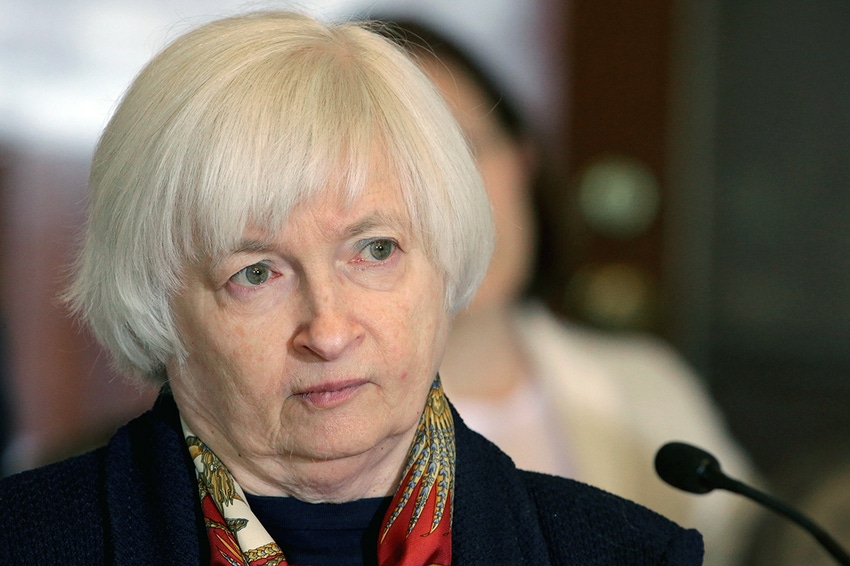
On Friday May 25, market participants waited with apprehension for U.S. Federal Reserve Chairman Janet Yellen’s 1:15 p.m. Harvard University interview by Professor of Economics Gregory Mankiw.
What was so important that the Fed Chairman agreed to an interview shortly before the close of an array of U.S. markets ahead of a three day Memorial holiday weekend?
Did the Fed Chairman feel the need:
To reinforce a dovish or hawkish monetary position since over the past few months directional signals have kept market participants off balance;
To comment on raising interest rates possibly as soon as their June 14-15 meeting or July 26-27 meeting;
Or was it to comment on the referendum on the United Kingdom’s membership in the European Union;
Or perhaps she was concerned about the economic outlook of China, Japan, European Union, softness in the global economy, etc.;
Or maybe she was just interested in a high profile interview at a high profile time; or was it some other issue?
The reality was the U.S. Federal Reserve Chairman needed to send a message, and the message needed the collective attention of the market participants.
Central Bank Actions Less Than Predictable
Fiscal and monetary policy actions, especially Central Bank monetary policy guidance by the U.S., European Central Bank, Bank of Japan, Bank of England, etc. has caused anticipated and unanticipated directional shifts in global markets since mid-December 2015.
This is not as much a criticism; due to the ongoing risk and uncertainty surrounding countries, regions and the global economy, which in turn creates varying and unpredictable levels of fiscal and monetary policy intervention.
Since mid-February up until a couple of weeks ago what appears to be an orchestration of major global Central Bank activity to reflate the global economy has been more bullish than bearish for many assets classes like equities, commodities, and other hard assets.
During this period the dollar weakened against many global currencies and provided much needed relief for many countries carrying large dollar-denominated debt.
Oil and soybeans were two commodities that saw price appreciation with market squeezes, speculative activity, inflationary pressures, fundamental uncertainty as well as geopolitical risks being factored in prices.
Future Fed Action
Near term future Fed Monetary Policy Activity appears increasingly hawkish with all indications of a Feds Fund Rate Increase sooner rather than later. I would expect as soon as the June meeting even though presently based on the CME Group 30-Day Fed Fund futures prices, a rate increase presently does not seem likely, but I anticipate that will change with each passing day between now and June 15th.
That said, the Fed has signaled a need to transition away from global reflation to managing a potential outbreak of inflation.
Conclusion
First, U.S. Federal Reserve Chairman Janet Yellen has market participants’ attention as they change the course of monetary policy.
The Fed Chairman, to paraphrase, believes it is appropriate for the Fed to gradually and cautiously increase their overnight interest rate over time, and probably in the coming months, which implies they see a domestic and/or global economy with adequate growth or simply the Fed has no alternative viable policy action.
In my words, expect an announcement of a June 15 rate increase.
Second, the Fed sees a need to be hawkish in this economic setting even though there are reasons to be dovish. Being hawkish implies they are maneuvering to get in front of an issue, like global inflationary concerns. This activity will likely be more bullish than bearish near term for the dollar.
Normally in this type of economic setting, assuming all things equal, the best case scenario would be neutral for equities and more bearish than bullish for commodities unless some anomaly like a weather event, economic, or other anomaly impacts a specific hard asset. The individual market impacts due to intended and actual policy actions will be visible over the next few weeks.
Dr. Bobby Coats is professor of agricultural economics and agribusiness with the University of Arkansas System Division of Agriculture. He is a frequent contributor to Delta Farm Press.
For more on the University of Arkansas Department of Agricultural Economics and Agribusiness, visit http://www.uaex.edu/farm-ranch/economics-marketing/food-agribusiness-webinars/.
About the Author(s)
You May Also Like




